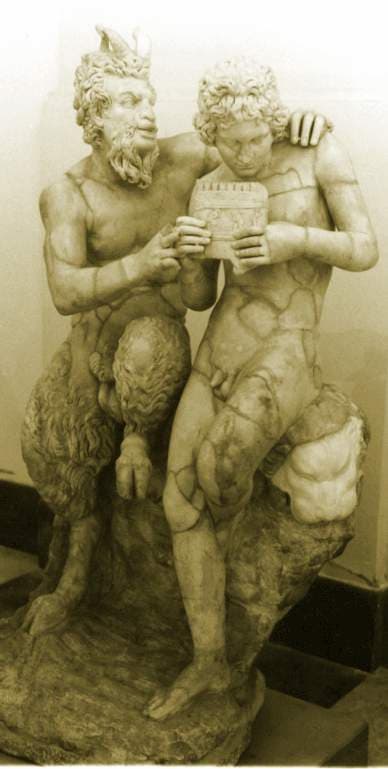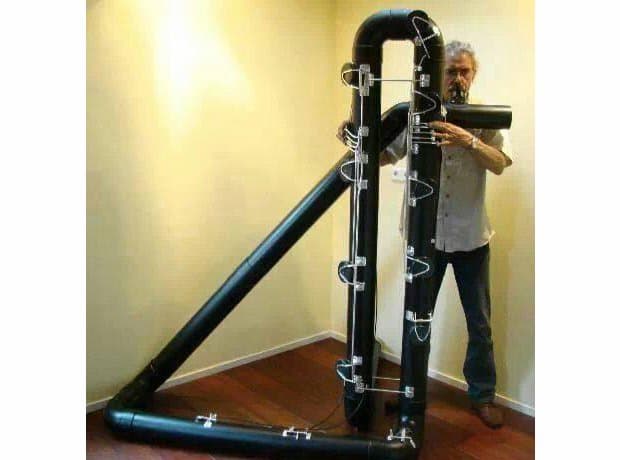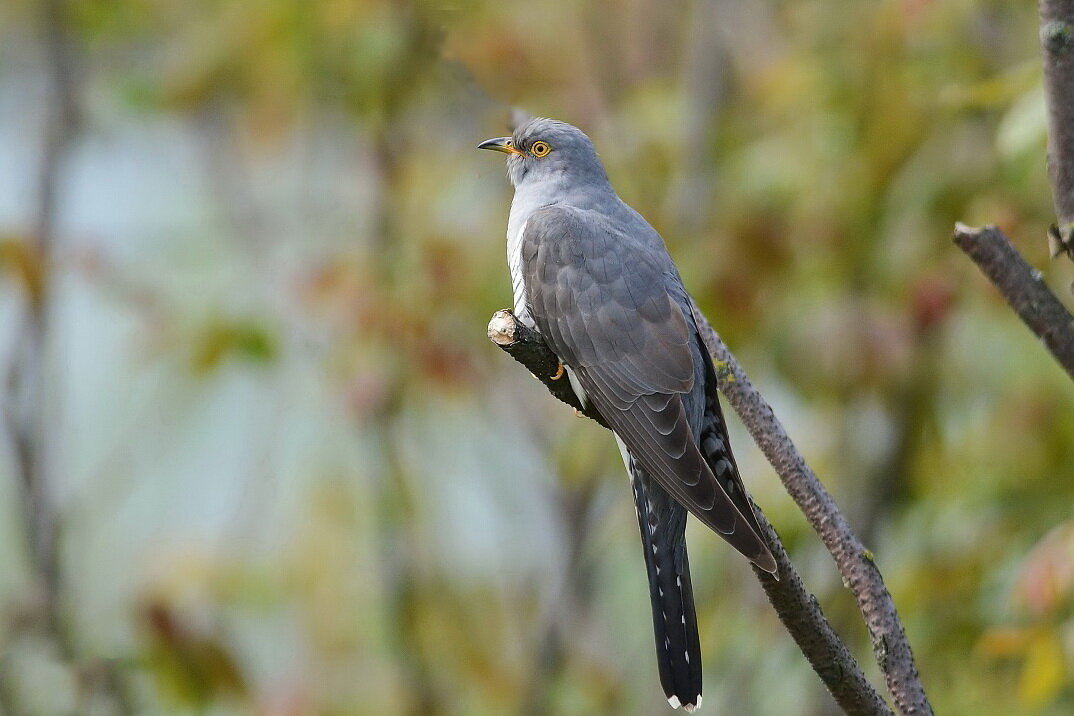Added to our list of ancient instruments, starting with percussion and the harp, we have to add the flute. Starting from blowing on a hollow reed and then hollowed-out bones, the flute became an extension of the voice.
The flute, no matter what material it’s made out of, is part of the woodwind family. A modern flute sounds when the player blows air across an opening – yet there are many variations on this. A recorder has a mouthpiece that you blow into, but you’re still directing your airstream across an opening. End-blown flutes, like the nay in the Middle East or the shakuhachi in Japan, also work on the same principle.

Modern concert flute (maker: Gemeinhart)

The end-blown nay

Shakuhachi player Kaoru Kakizakai
In Western music, we can start with J.S. Bach (1685–1750). While in the service of Prince Leopold of Anhalt-Cöthen, Bach started writing flute sonatas; he also wrote other works where the flute had a prominent role. A work such as his second Ouverture, BWV 1067, ends with a quick-paced Badinerie where the flute takes the leading role.
J.S. Bach: Overture (Suite) No. 2 in B Minor, BWV 1067 – VII. Badinerie (Juliette Hurel, flute; Ensemble Les Surprises)
Antonio Vivaldi (1678–1741) used the singing and bird-like qualities of the flute for his Flute Concerto in D major, which carries the nickname of Il gardellino (The goldfinch).
Antonio Vivaldi: Flute Concerto in D Major, Op. 10, No. 3, RV 428, “Il gardellino” – I. Allegro (Scott Goff, flute; Seattle Symphony Orchestra; Gerard Schwarz, cond.)
The virtuoso cellist, Luigi Boccherini, who largely made his career in Spain, wrote a set of works for flute and string quartet in 1773. His Opus 17 quintets are dedicated to his Spanish patron, Prince Luis Antonio de Borbón (1727-85). It is not known if there was a specific flautist he was writing for, but the addition of the flautists Manuel Cavazza, Francesco Mestres, and Manuel Espinosa to the Prince’s chamber ensemble may have been one inspiration.
Luigi Boccherini: Flute Quintet in D Major, Op. 17, No. 1, G. 419 – II. Minuetto: Amoroso (Rafael Ruibérriz de Torres, flute); Francisco de Goya String Quartet)
If we move forward through the centuries, the flute is used in many different ways to portray musical settings. In Gluck’s opera Orfeo ed Euridice, the key element of the second scene of the second act, where Orfeo enters the underworld, is the ballet set in Elysium. This eventually was expanded from a brief ballet in 1762 to become a separate work entitled Dance of the Blessed Spirits, with a prominent part for solo flute.
Christoph Willibald Gluck: Orfeo ed Euridice, Act II – Dance of the Blessed Spirits (Helmut Rucker, flute; Dresden Philharmonic Orchestra; Herbert Kegel, cond.)
When we get into the 19th century, the pagan connections of the flute could also come to the fore. Debussy’s Syrinx and his Prélude à l’après-midi d’un faune. The association of the flute with the mythological Pan inspired Debussy in 1913 to write La Flûte de Pan. The title was changed to Syrinx by his publisher Jobert because Debussy already had a work by that title as the first song in the Chansons de Bilitis collection, however, he didn’t change the name until after the death of both Debussy and Louis Fleury, the flautist who played the premiere of the work. The short piece was written to accompany a performance of Gabriel Mourey’s three-act play Psyché.

Pan and Daphnis
Claude Debussy: Syrinx (Karl-Heinz Schütz, flute)
An interesting arrangement of this work for modern flute is its arrangement for the ancient flute that Pan would have used, the pan flute. Also known as the panpipes or the syrinx, the instrument consists of various wooden pipes of lengths bound together.
Claude Debussy: Syrinx (arr. L. Rokyta for pan flute) (Liselotte Rokyta, pan flute)
Before Syrinx, however, in 1894, Debussy wrote Prélude à l’après-midi d’un faune. Debussy’s piece was inspired by the poem ‘L’après-midi d’un faune’ by the French symbolist poet Stéphane Mallarmé, who brought out all the associations with the faun representing Pan and his pagan world. The dream world of the faun was made manifest in 1912 when Serge Diaghilev used the score for a solo dance by Nijinsky. Nijinsky’s overly erotic dance made the work notorious.
Claude Debussy: Prélude à l’après-midi d’un faune (Lyon National Orchestra; Jun Märkl, cond.)
Edgard Varèse’s work for solo flute, Density 21.5, was written in 1936 and revised in 1946 for the premiere. It was written at the request of the French flautist Georges Barrère. The title referred to the density of platinum (21.5 grams per cubic centimetre) and was named in honour of Barrère’s new platinum flute.
Edgard Varèse: Density 21.5 (Andy Findon, flute)
The flute, of course, comes in a variety of sizes. The smallest, the piccolo, is a mere 33 cm (13 inches) long; a concert flute is 70 cm (27.5 inches); and the contrabass flute is 270 cm (8.8 feet) long. The rarest and lowest flute is the hyperbass flute, an astounding 8 meters (26 feet) in length.
Piccolos have a high, bright sound that is an octave higher than a concert flute. It’s often used to highlight the violins, and one of the first to use it in the orchestra was Beethoven. Unlike the modern flute, it has a conical bore and so has a slightly different fingering system than the concert flute.
Karlheinz Stockhausen’s Zungenspitzentanz, was written for piccolo and two euphoniums (or one synthesizer), with an optional percussionist and dancer, but is often performed by solo piccolo.
Karlheinz Stockhausen: Zungenspitzentanz
Canadian composer Nancy Nourse wrote her 2010 Quelque chose Canadienne (Something Canadian) for a trio of piccolos.
Nancy Nourse: Quelque chose canadienne (Something Canadian) – II. Un canadien errant (Jean-Louis Beaumadier, Christine Erlander Beard, Nancy Nourse, piccolos)
On the other end of the scale is the hyperbass flute, which first appeared in the early 21st century. This 8-meter-long instrument has its lowest note pitched an octave below the lowest note on the piano. Only two of these flutes are known to exist. The first hyperbass, shown here, had open holes that would be covered by the hand. The second flute, made in 2010 by Dutch maker Jelle Hogenhuis, was made with keys.

Hyperbass flute with open holes played by Roberto Fabbriciani

Hyperbass flute with keys by Hogenhuis
His work Alluvione refers to the 1966 flooding of Florence by the River Arno. Originally written in 1970 for bass flute, the composer and performer has written a new version for hyperbass flute.
Roberto Fabbriciani: Alluvione (Roberto Fabbriciani, hyperbass flute)
The flute’s long history has made it beloved by many players – from the modern honkings of the low flutes to the brilliant shine of the piccolo, there’s a sound for everyone.
For more of the best in classical music, sign up for our E-Newsletter

